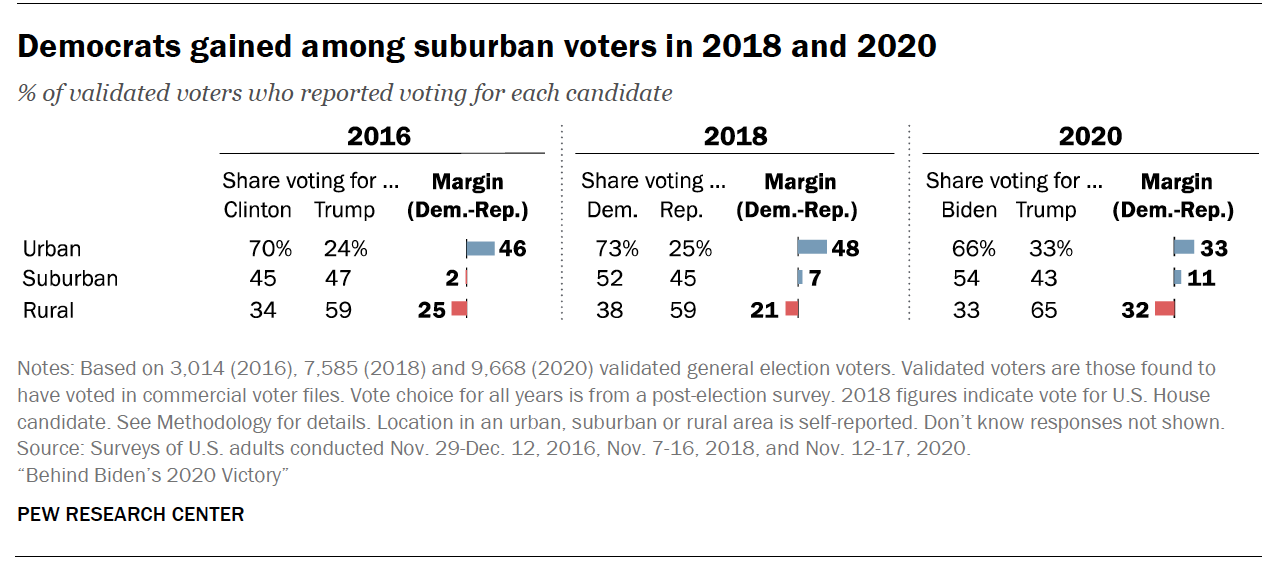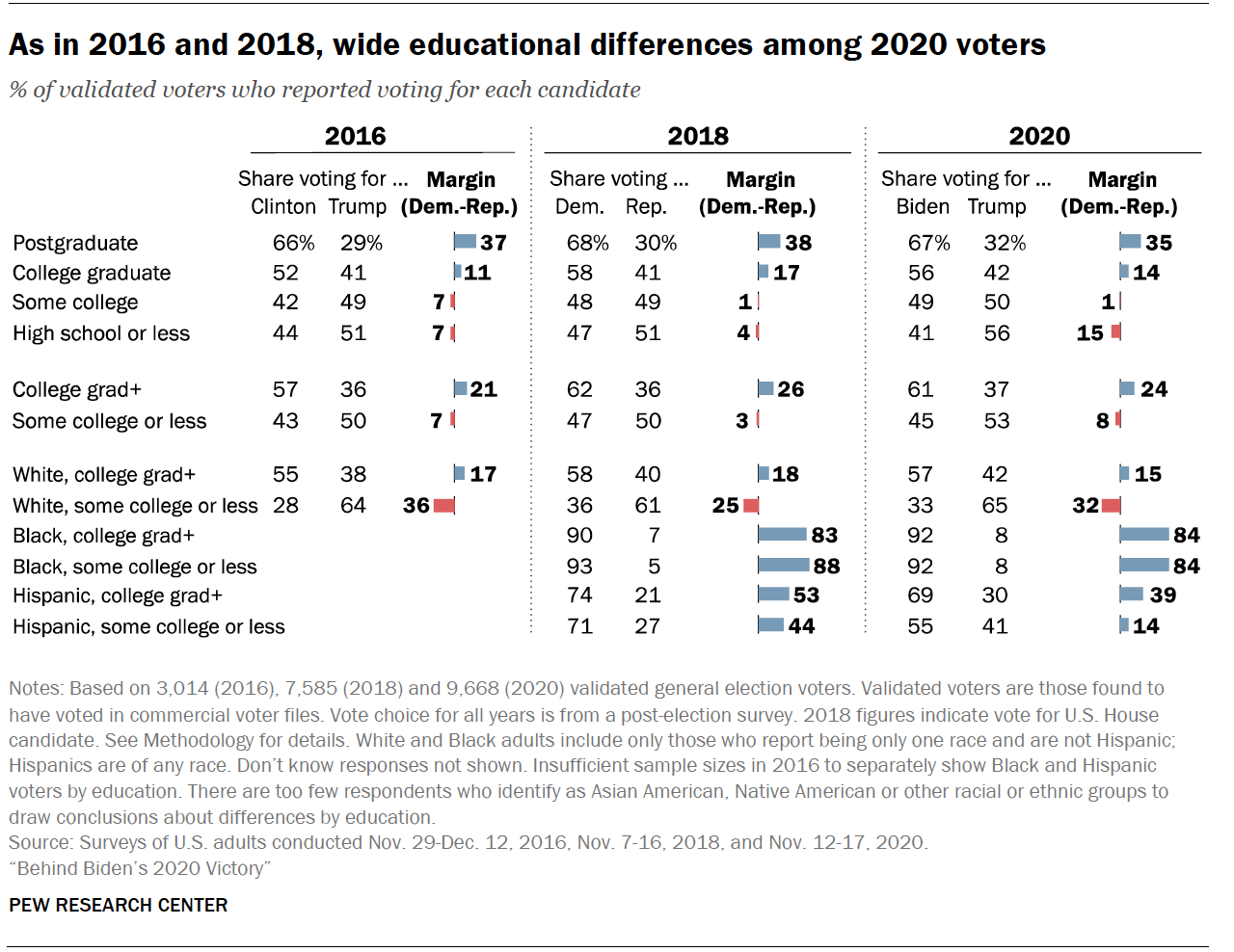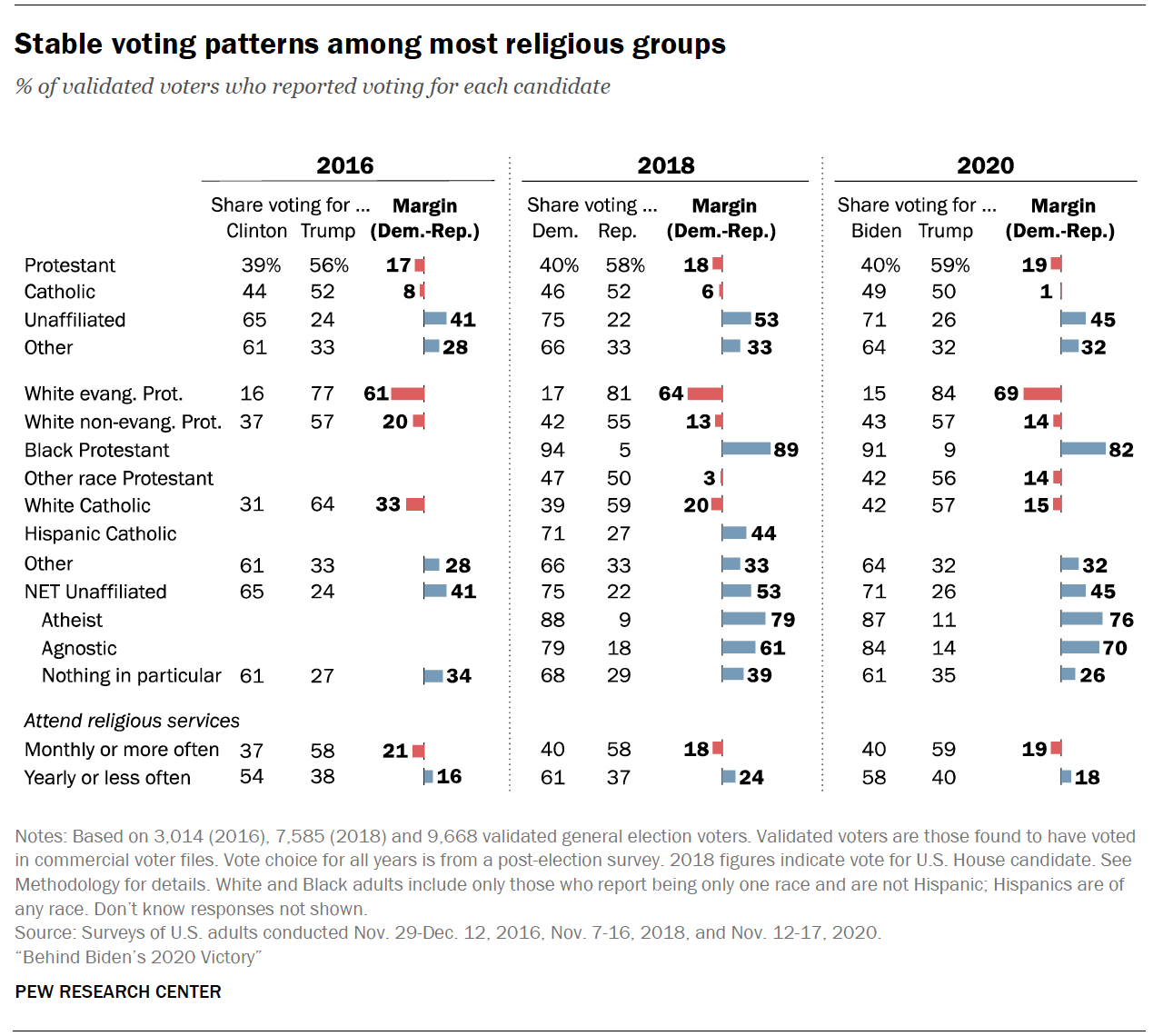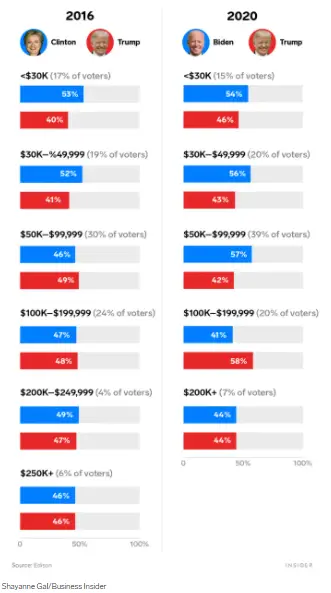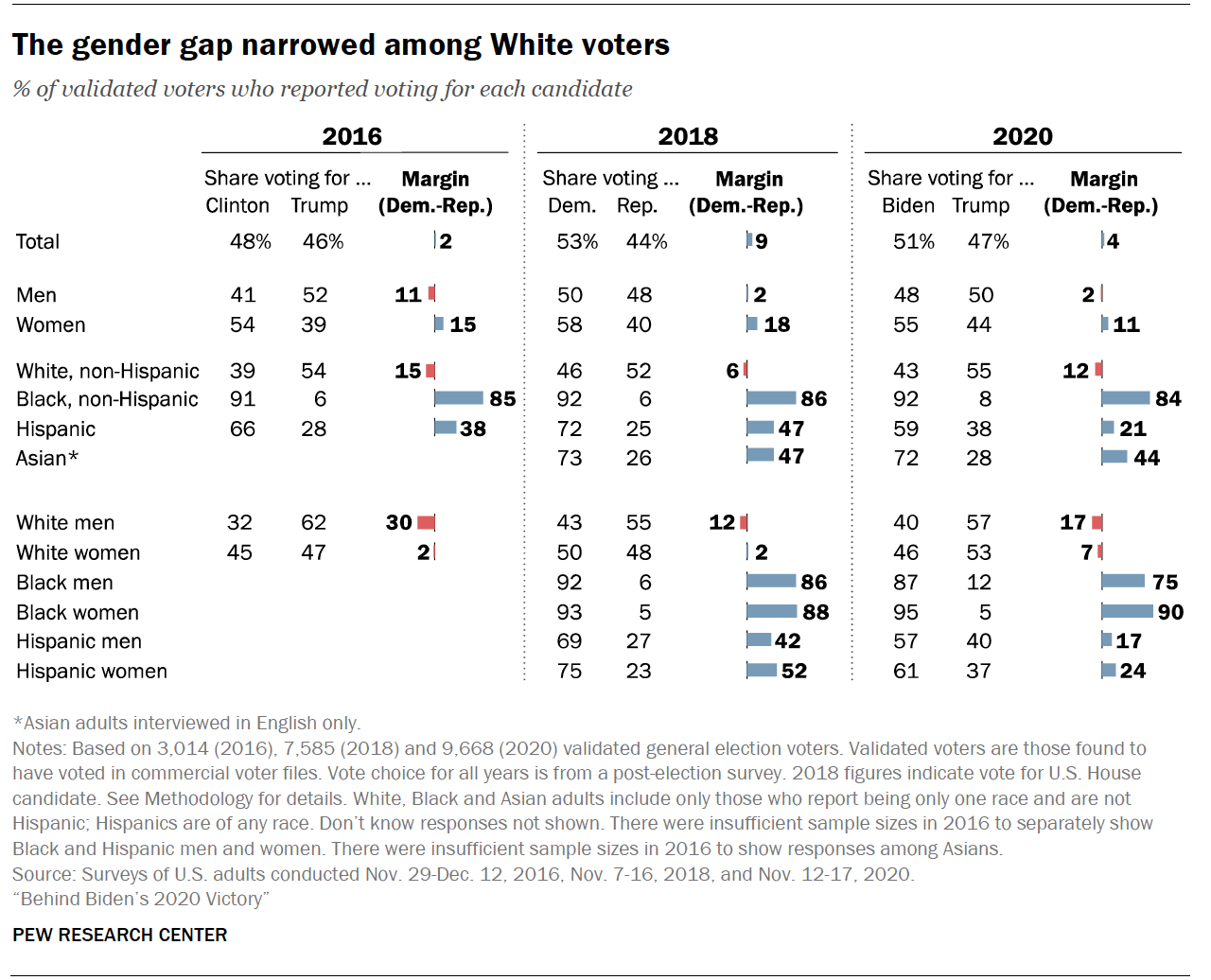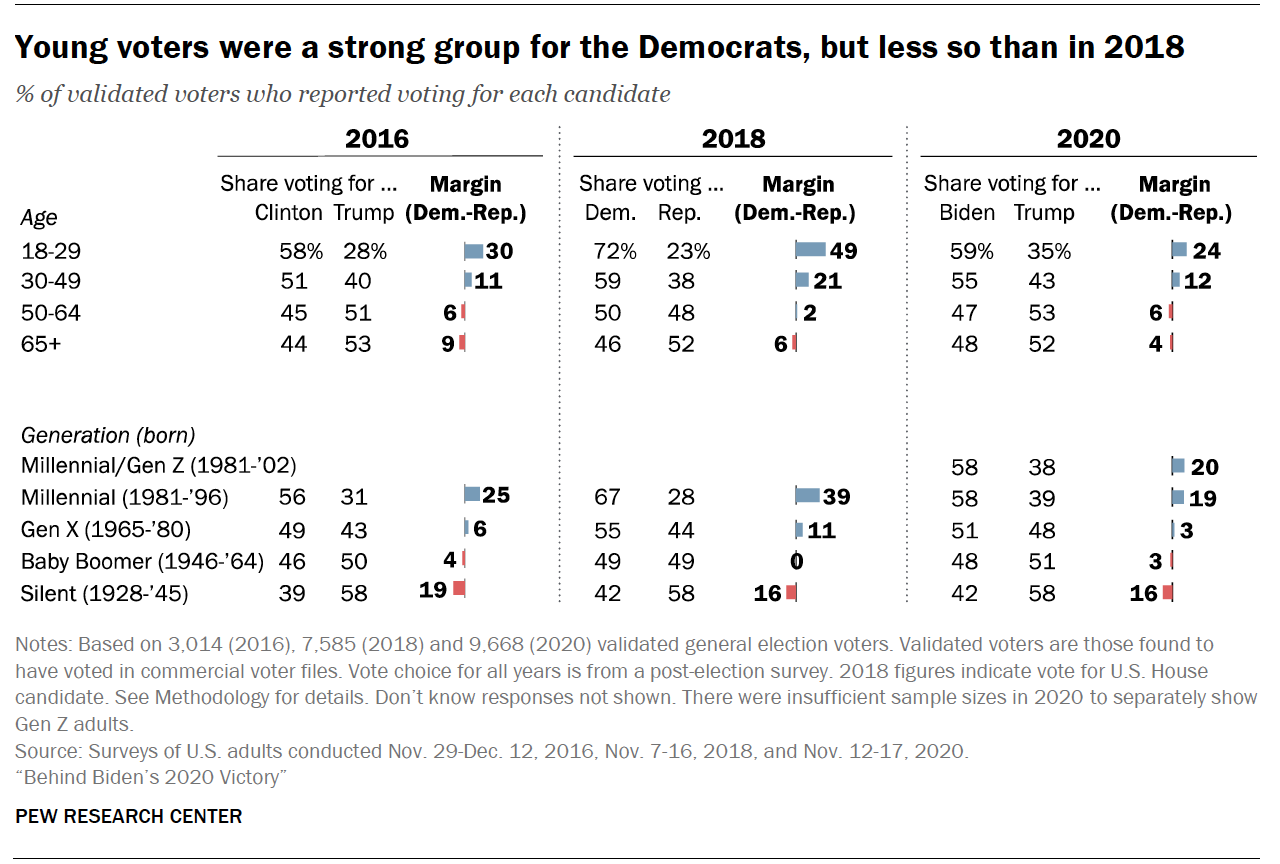Part
01
of one
Part
01
American Voters Affiliation Change
Key Takeaways
- Voters who switched from Trump to Biden noted that the COVID-19 pandemic influenced their decision to switch sides. Clinton-to-Trump voters named their concern for the economy as the motive for flipping.
- Although the majority of voters from 2016 remained loyal to their candidates/parties, there were major shifts in the support given to candidates by key demographics. For example, 49% of voters with family incomes between $50,000 and $99,000 voted Trump in 2016 compared to only 42% in 2020, while Biden gained 11 points on the same income group.
- Trump's share of women's vote increased in the last election compared to the year 2016, moving up from 39% to 44%. 52% of men supported Trump in 2016 compared to 50% in 2020. Trump's support from white men also significantly dropped from 62% to 57%.
Introduction
This report contains quantitative data and insights on the percentage of voters who have voted for both parties in the last two presidential elections (2016 and 2020) and the percentage difference in demographic support.
Vote Flipping
- According to a report by the Washington Post, Biden flipped the votes of 4.8% of Republicans across the US in the 2020 presidential elections, while Trump got only 3.3% of Democrat votes.
- In nine states of the US, including five states that were previously pro-Republican, Biden got 6% of his votes from citizens who had voted for Donald Trump in the 2016 elections. Those who did not vote in 2016 constituted 20% of Biden voters in 2020. Clinton voters in 2016 also made up 3% of Trump voters in those nine states in 2020.
- Voters who switched from Trump to Biden noted that the COVID-19 pandemic influenced their decision to switch sides. Clinton-to-Trump voters named their concern for the economy as the motive for flipping.
- 53% of voters who supported third-party candidates in 2016 voted Biden in 2020, while 36% voted for Trump. Only 10% of them remained third-party supporters in the last election.
Voter Demographic
- Although the majority of voters from 2016 remained loyal to their candidates/parties, there were major shifts in the support given to candidates by key demographics.
- Biden won over more suburban voters than Clinton had in the 2016 election. Hillary Clinton had 45% of suburban votes, while Joe Biden had 54% in 2020. Trump's share of rural votes rose from 59% to 65% in 2020.
- The suburbs moved their support from Trump to Biden. The cities and urban areas also voted Biden.
- Votes for Democrats from individuals with High School education or less dropped from 44% to 41% between 2016 and 2020.
- Biden copped more votes, about 33%, from whites who do not have a college degree than Clinton did in 2016. This represents a 5 point increase from Clinton's 28%.
- Ex-President Trump's popularity among postgraduate degree holders rose from 29% to 32%.
- While Trump made some advancements with highly educated voters, research shows that the more education a person has, the more likely they are to vote for a Democrat.
- White evangelical Protestants' support for Trump moved up from 77% in 2016 to 84% in 2020. Trump also lost Catholic votes, moving from 52% in 2016 to 50% in 2020.
- 49% of voters with family incomes between $50,000 and $99,000 voted Trump in 2016 compared to only 42% in 2020, while Biden gained 11 points on the same income group.
- Trump's share of women's vote increased in the last election compared to 2016, moving up from 39% to 44%. 52% of men supported Trump in the year 2016 compared to 50% in the year 2020. Trump's support from white men also significantly dropped from 62% to 57%.
- More Hispanics voted for Trump in 2020 than they did in 2016. Although Democrats maintained the upper hand with Hispanic voters, the vote margin dropped from 38% to 21% as Trump's share moved up from 28% to 38%.
- Despite appealing to Black men, Trump's black male vote plunged from 14% to 12% in 2020.
- While President Biden won the votes of young people aged 18-29, the group's support for Trump improved. Trump's votes went up from 28% to 35%.
Research Strategy
In answering this research, we provided information from reputable sources, including Pew Research Center, The Washington Post, and Business Insider. We included quantitative data on voters who switched sides in the last two presidential elections and the percentage difference in demographic support.

